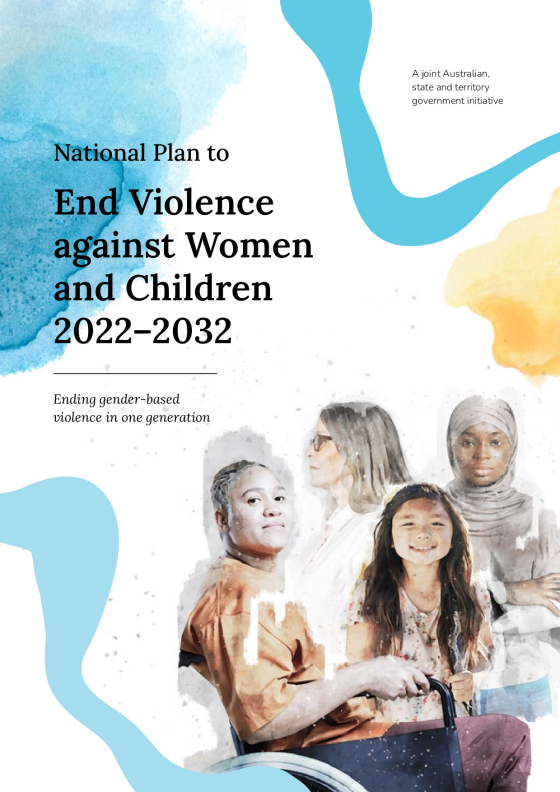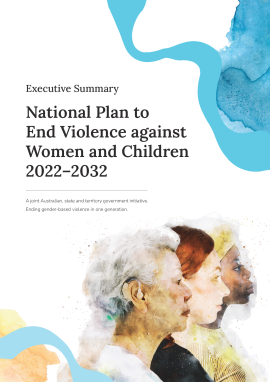About the National Plan
The National Plan to End Violence against Women and Children 2022–2032 (National Plan) is the overarching national policy framework that will guide actions towards ending violence against women and children in one generation.
It builds on the lessons learned from the previous National Plan that covered 2010 to 2022.
All people deserve to live safely and free from fear of violence. We know that this will require a whole of society effort, and we need everyone in the community, industry and government to come together to end family, domestic and sexual violence.
The National Plan focuses on 4 main areas:
- Prevention – stopping violence before it starts
- Early intervention – helping early when people are at risk
- Response – supporting people when violence happens
- Recovery and healing – helping people heal and rebuild their lives.
National Plan resources
The National Plan and associated documents all work together to outline what we expect to achieve and how we plan to do it.
The National Plan to End Violence against Women and Children 2022–2032
The National Plan is the overarching national policy framework that will guide actions towards ending violence against women and children over the next 10 years.
Access this
Executive Summary of the National Plan
Access thisMore information
- Learn more about how we’re taking action.
- Learn more about progress on the National Plan.
- Learn more about governance of the National Plan.
- Find out where to get help and support for ending violence(Opens external website).
Was this page helpful?
DSS100 | Permalink: www.dss.gov.au/node/100

